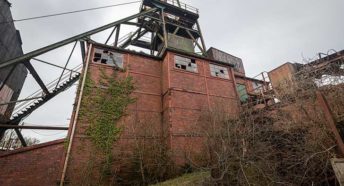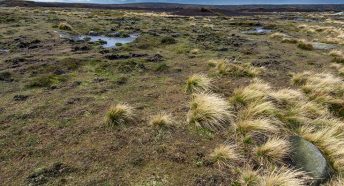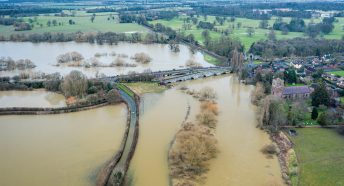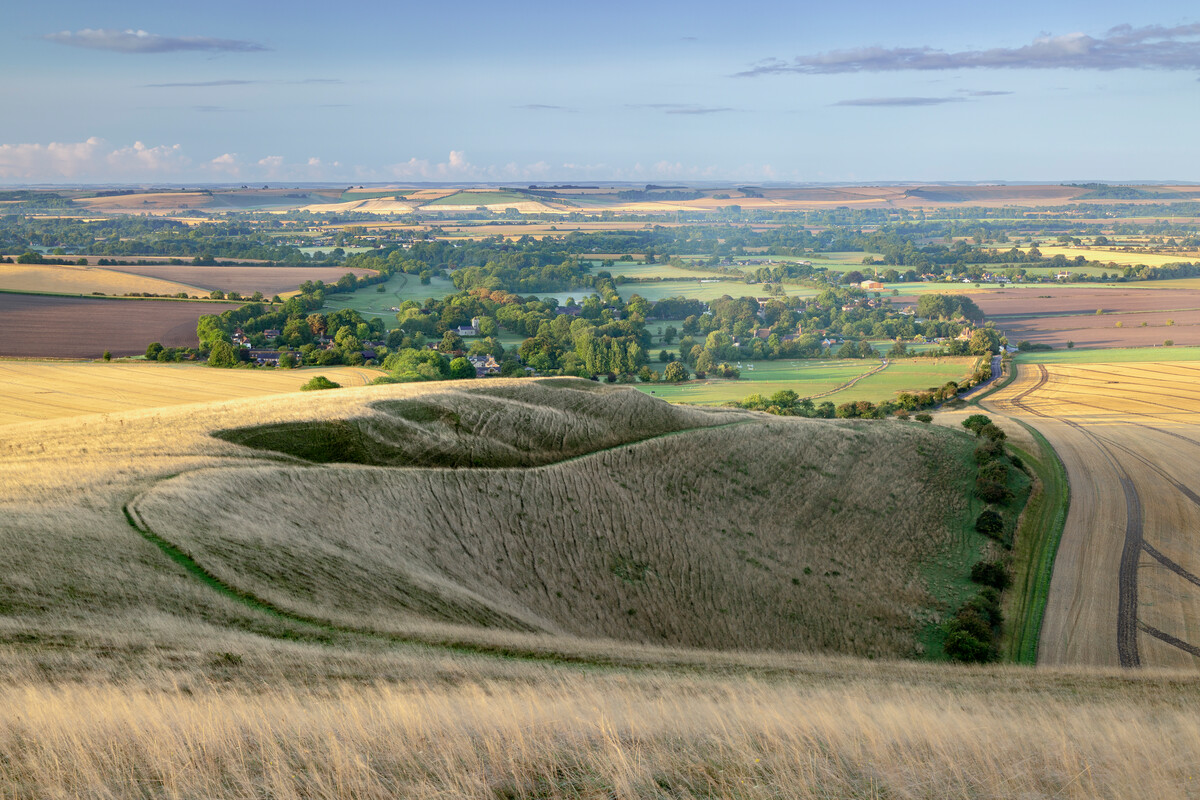‘Make Britain Wet Again!’: Guy Shrubsole on land use
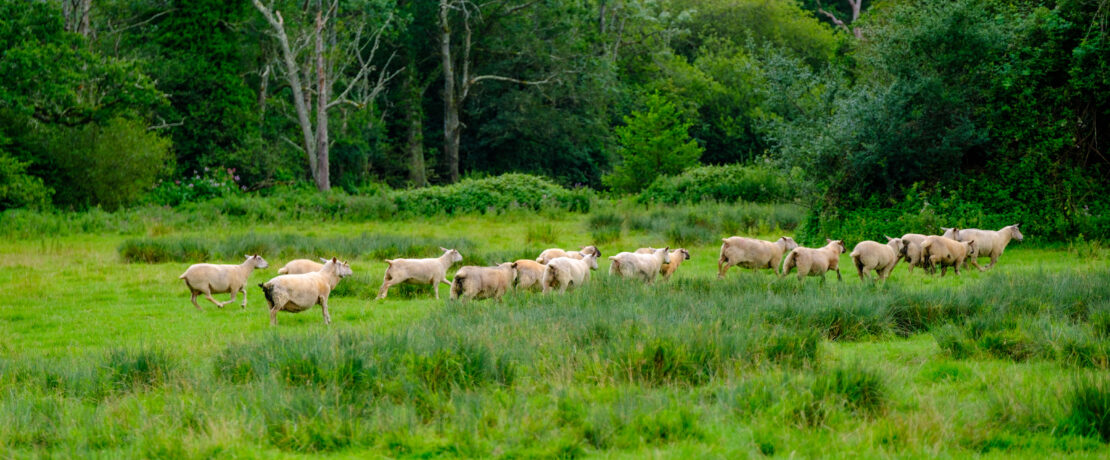
The government’s Land Use Framework consultation closes this month. Meanwhile, land is under more pressure than ever, and as our CEO Roger Mortlock wrote recently, ‘The Land Use Framework consultation presents an opportunity to reshape how we manage land’. Lola, our campaigns and content officer, took the opportunity to sit down with Guy Shrubsole, an environmental campaigner and author of The Lie of the Land (William Collins, 2024), The Lost Rainforests of Britain (2022), which won the Wainright Price for writing on conservation, and Who Owns England? (2019). He’s worked for a wide range of organisations from Friends of the Earth and Rewilding Britain to the Department for Environment, Food and Rural Affairs.
Lola: The government has been consulting on a Land Use Framework to better help us manage finite land. What would a genuinely ambitious and fair framework look like to you? And what’s at risk if we get it wrong?
Guy Shrubsole: The Land Use Framework is a really exciting and important opportunity to properly plan how we use our most finite resource – our land. As Mark Twain once quipped, ‘buy land, they’re not making it any more’. The strictly limited nature of land should be particularly obvious to island nations like ours. We urgently need a plan to look after our land properly – yet until now, no government at Westminster has tried to make one.
Farmers have always known that it’s much harder to produce food in some parts of the country: in Dartmoor (near where I live), where the rainfall is torrential and the soils poor, it’s incredibly hard work. On Dartmoor we have a legend about an ancient god of the moors called Old Crockern, who curses a wealthy landowner for trying to develop the land, with the words: ‘You scratch my back, and I’ll tear out your pockets’. In the story, the landowner loses a fortune vainly trying to ‘improve’ the moor for agriculture.
‘Dartmoor and other upland areas are utterly essential in the fight against the climate crisis.’
But Dartmoor and other upland areas are utterly essential in the fight against the climate crisis, and could be incredible landscapes bursting with wildlife if treated right. If you’ve ever hiked over Dartmoor, you’ll likely have got your feet wet stomping across blanket bog: a gloriously green and gloopy habitat composed of peat-forming mosses, sometimes metres deep. They’re massive carbon stores, locking up CO2, as well as supporting a wealth of frogs, insects and rare plants. In the past, some landowners have tried to drain and burn these bogs to improve pasture for sheep (and in other parts of England, boost heather growth for grouse shooting), but all they’ve done is wreck these fragile ecosystems. The Land Use Framework needs to encourage farmers in our uplands to restore nature, rather than keep trying to squeeze a few calories from them.
The government’s consultation underestimates the scale of land use change that’s needed if we’re to turn around the devastating loss of wildlife and habitats in this country. Ministers have signed up to the ‘30by30’ goal of protecting 30% of England for nature by the year 2030 – yet even the government accepts that only 7% of England currently counts towards this target. The scale of changes to land use proposed in the draft Framework aren’t nearly ambitious enough to meet this huge shortfall in my opinion. So we’re going to need to hold ministers and officials’ feet to the fire on this. Otherwise, I really can’t see how we can turn things around for nature in England. For more details on this, you can read my (geeky but hopefully interesting!) submission to the consultation here.
Our current Agricultural Land Classification (ALC) system is around 80 years out of date, with temperature and rainfall in particular having shifted enormously due to climate change. What are the risks of basing decisions about current and future land use on this? How would you improve the ALC to reflect the environmental and food production context of today?
It’s incredibly important that we properly understand how climate change is affecting the fertility of our soils. Yet by submitting a Freedom of Information request, I discovered that the previous government had rejected a review of the ALC system, possibly out of fear of affecting land prices. That’s such a short-sighted thing to do.
The ALC maps were last updated in 1988 – that’s four years before governments around the world first properly acknowledged the seriousness of climate change at the Rio Earth Summit! They’re desperately out of date. What’s more, it’s not just the climate that’s changed for the worse in that time: we’ve also lost a lot of our best soils since then. Under the ALC system, the most fertile and versatile soils – ‘grade 1’ – are found in the Fens of Cambridgeshire. This is where we currently grow around a third of England’s fresh veg. Yet we know that because of ongoing drainage and intensive agriculture, these rich peat soils are being eroded and washed away at an alarming rate. Without major changes in how they’re farmed, they’ll be gone in a matter of decades.
‘It’s good to see the Land Use Framework consultation saying the government wants to update its understanding of soil fertility.’
So it’s good to see the Land Use Framework consultation saying the government wants to update its understanding of soil fertility. If they want to fix the Agricultural Land Classification system, Ministers should look no further than this excellent report recently commissioned by CPRE, which contains a great set of recommendations.
‘Urban fringe farming’ – that is, farming in the Green Belt and countryside outside of our towns and cities – makes a significant contribution to the UK’s food supply. What are the unique challenges for these kinds of farms and how might the government better support them as part of a resilient local food network?
On my wall at home I’ve got a map showing land use around London drawn in the year 1800, and it’s an astonishing insight into how much food was once grown on land that’s since been buried under bricks and mortar. The cartographer, Thomas Milne, colour-coded the fields according to what was growing in them – green for pasture, orange for arable crops, blue for market gardens (where they grew fruit and veg). It’s amazing to see how built-up places like Earl’s Court and Chelsea were once fields growing onions and carrots.
‘It’s amazing to see how built-up places like Earl’s Court and Chelsea were once fields growing onions and carrots.’
This shouldn’t be such a surprise, of course: London was founded on the Thames in part because of the rich alluvial soils that allow for good harvests. Heathrow used to be covered with orchards and glasshouses before it was tarmacked for the airport. The Lea Valley is still a major centre for vegetable growing, although the extent of greenhouses there has declined by around 80% since the 1950s.
It drives me mad when I hear politicians talk about ‘food security’ but fail to distinguish between different sorts of food produce. For example, we produce far more mutton and lamb than we actually eat, but we’re only 53% self-sufficient in fresh vegetables. Yet the last government ditched plans for a Horticulture Strategy. Labour has now commissioned a new Food Strategy, so I hope that focuses on increasing domestic production of fruit and veg, particularly in peri-urban areas.
‘Labour has now commissioned a new Food Strategy, so I hope that focuses on increasing domestic production of fruit and veg, particularly in peri-urban areas.’
The climate crisis is the biggest threat facing our countryside. How can a Land Use Framework (or new thinking on land use) address mitigation and adaptation? Where do you see the biggest trade-offs?
My election-winning slogan for what we need to do to adapt to the climate crisis is: Make Britain Wet Again!
More seriously, we really do need to make our landscapes wetter and less fire-prone. Most natural ecosystems in the UK are not at all flammable: the ecological historian Oliver Rackham once remarked that our deciduous woods “burn like wet asbestos” – that is, not at all. But we have also created various human-influenced landscapes, like heaths and moors, which are more susceptible to catching fire.
The practice of burning heather on moors also dries out the underlying peat soils, damages blanket bog and has created a heather monoculture that’s more fire-prone than naturally more diverse vegetation stands. Grouse moor management has created a tinderbox. The answer is to end moorland burning (as the government are now proposing and consulting on), and re-wet the bogs.
‘My election-winning slogan for what we need to do to adapt to the climate crisis is: Make Britain Wet Again!’
Our countryside is being asked to do more than ever before and land is under increasing pressure to deliver for nature, farming, development and energy. What practical solutions are there for balancing these competing demands? How can we ensure that business decisions balance financial and environmental sustainability?
Guy: One thing that would massively reduce competing demands for land is to change our diets. As the land use consultation points out, 85% of the UK’s farmland is used for livestock grazing or to grow cereals that get fed to livestock. Just 1% is used for horticulture (growing fruit and veg). Eat less meat and we’d free up lots more land for other purposes.
In 2021, Henry Dimbleby’s National Food Strategy calculated that four steps could “halve the UK’s land footprint for food”, of which by far the most significant was “limiting our meat consumption”. This doesn’t mean us all becoming vegans: it means reducing the amounts of meat and dairy we eat, something that many people are already doing. A study by Oxford University found that Britons reduced their consumption of meat and dairy by 17% between 2009 and 2019. But politicians are terrified of being caught up in a culture war about meat-eating, and even some campaigning groups are too frightened of wading into this debate, too.
What are your thoughts on the Scottish land use strategy and the kinds of lessons it holds for England?
I think that England has a lot to learn from Scotland about the way it treats land – there has been a vibrant public discussion in Scotland since the 1990s about who owns land, how it’s used and whose interests it serves.
In some ways, the Scottish land use strategy is one of the less exciting aspects of this debate. It was mandated under the Climate Change (Scotland) Act 2009 and there have been three iterations of it since then. They’re pretty light-touch documents which are long on vision and short on targets and practical policies. Perhaps they serve as a warning for how an English Land Use Framework could end up being toothless. For a plan like this to be effective, it needs to really influence decision-making on the ground.
But this is where Scotland offers plenty of other lessons for England, because it has other policies which start to do this. Scotland’s 2003 Land Reform Act, for example, created a Community Right to Buy – giving communities powers to register an interest in land, a right of first refusal when it comes up for sale, and a pause in the ordinary sales process in order to have time to raise funds. Half a million acres of Scotland now belong to communities, from small-scale communal woodlands to a vast 10,000-acre former grouse moor acquired in recent years by the townsfolk of Langholm. What’s more, a commitment to sustainable development is written into the legal underpinnings to community ownership laws. Private landowners are under no such legal obligations.
A new Land Reform Act is currently under discussion in Scotland, and it contains one policy in particular that I’d like to see England follow. It will require large landowners to report on what they’re doing to better manage their land for nature and the climate. I think this is a really important way of holding large landowners to account, and has a crucial role to play in operationalising England’s Land Use Framework. For more information on this idea, you can read the joint letter that I sent to Nature Minister Mary Creagh about it, co-signed by CPRE and various other NGOs and academics.




